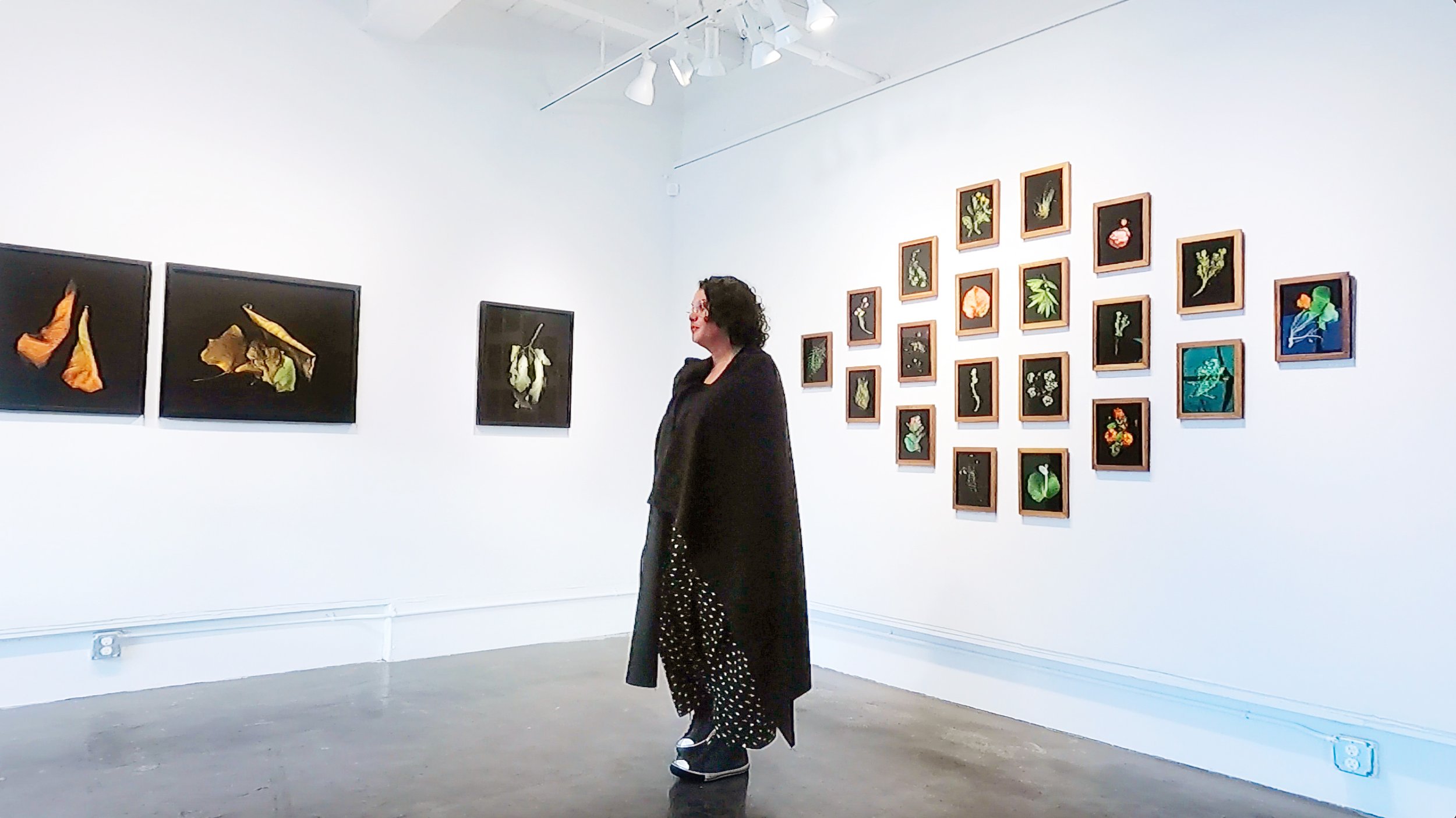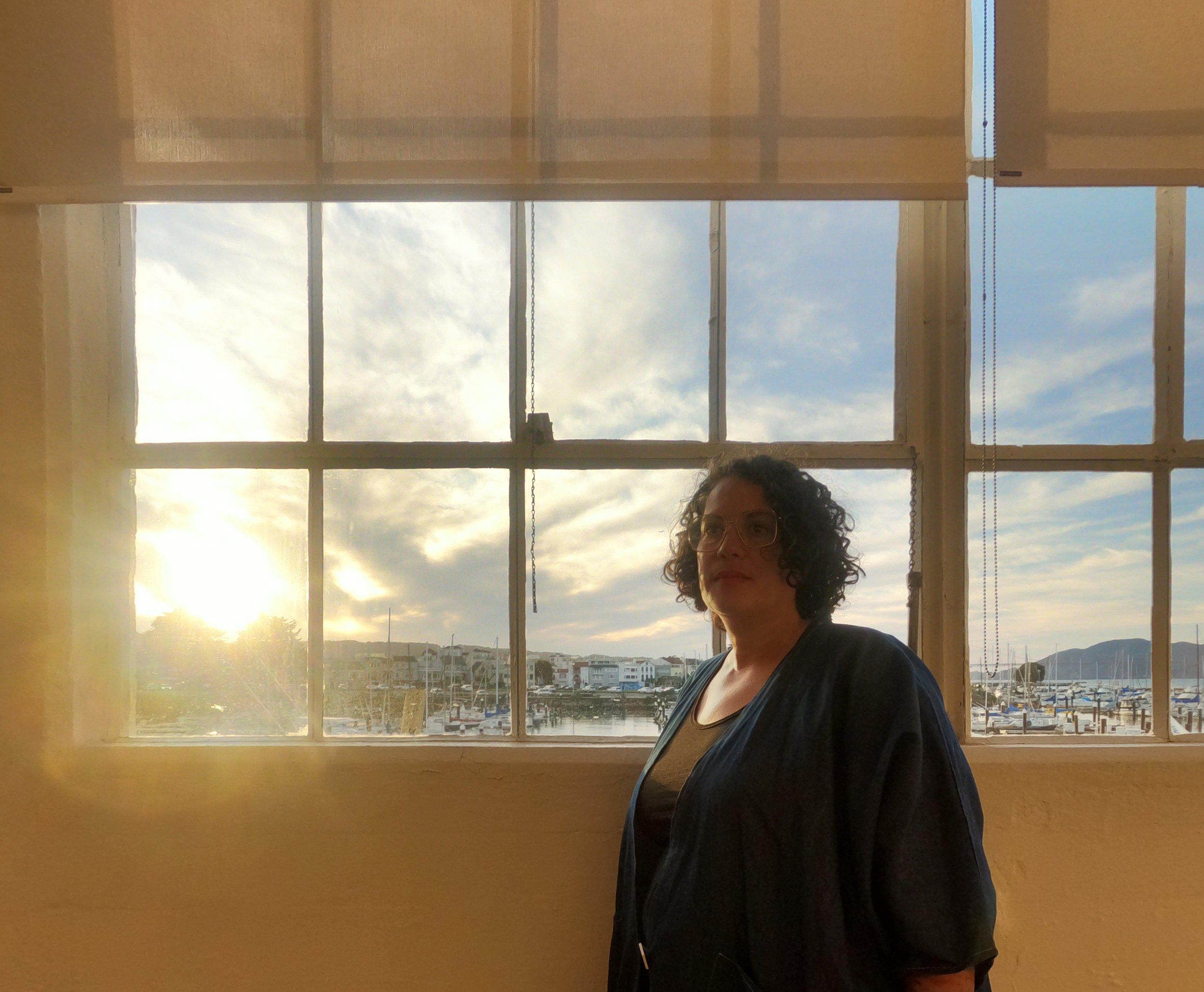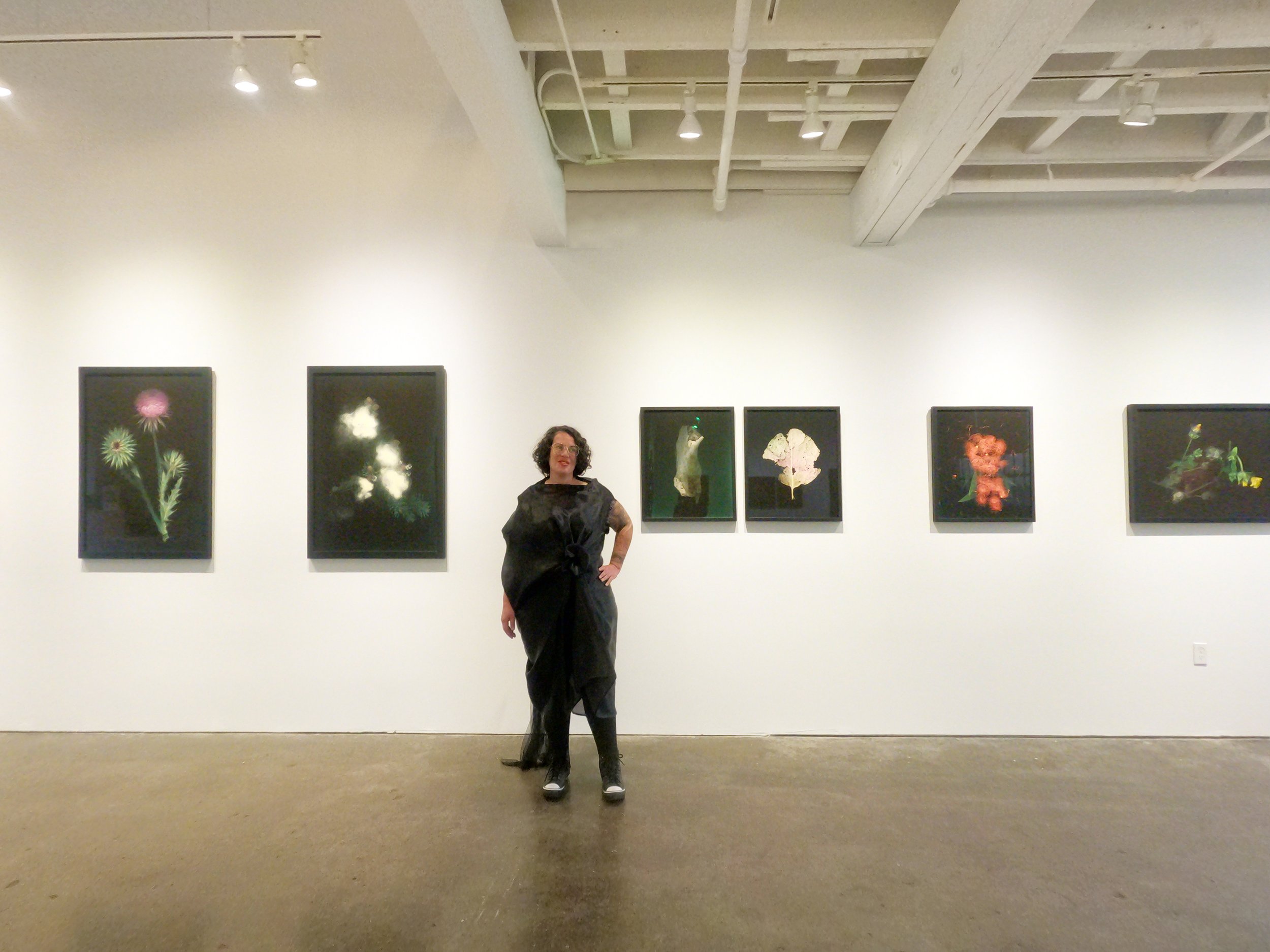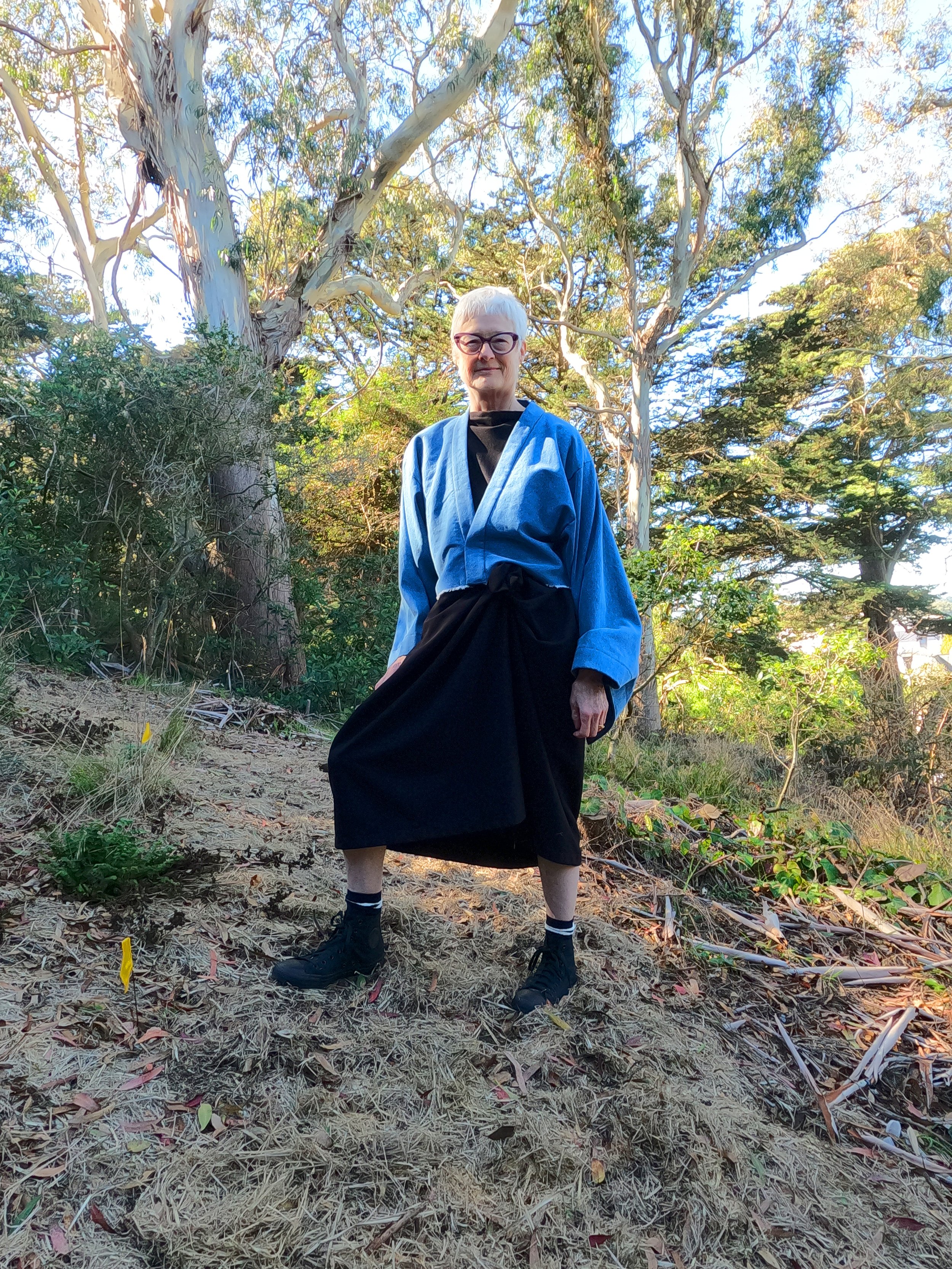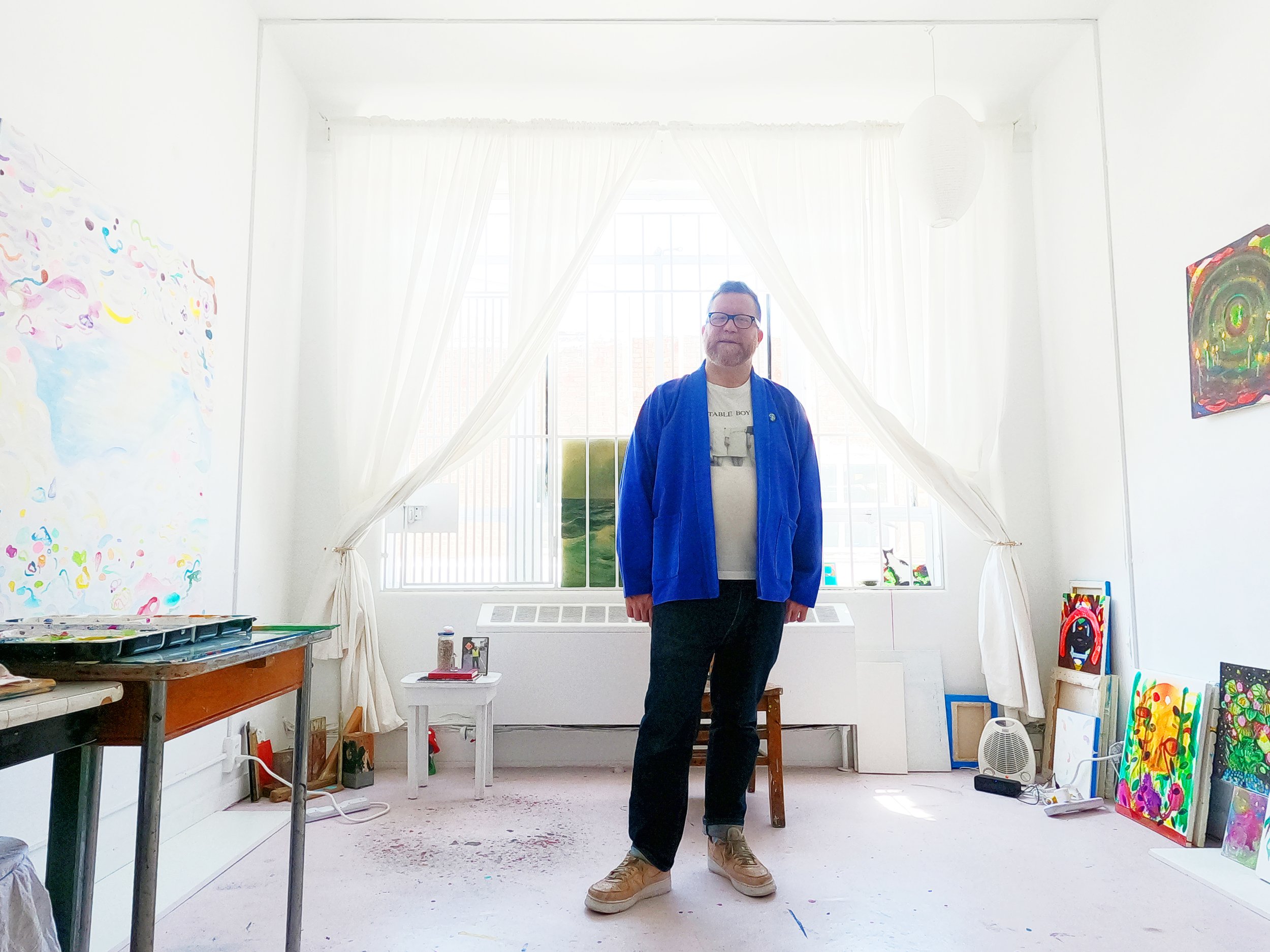Kija Lucas
Photographs by Akiko Tsuji
Kija wears the Entrance Mantle.
How should we address the concern of mislabelling? Even when well-intended, the way we decide to label things “properly” often leaves out many attributes that aren’t included in a list of pre-conceived categories. One of the first explorers to establish frameworks of categorization was the Swedish botanist Carl Linnaeus, referred to as “The father of modern taxonomy”, who used scientific labeling to fence off definitions. In response, the SF artist Kija Lucas raises long overdue questions on these limitations and provides new answers on the matter through her visual work in her exhibition “A Taxonomy of Belonging”.
I met with Kija at the newly relocated SF Camerawork Space at Fort Mason Center for Arts & Culture and after walking through the glass doors, I followed a line of sharply framed prints of oversized plants straight into the back of the white gallery space. A synthetic fidelity of colors emerges from the pitch-dark background of each image which speaks equally to technical precision and random form. The plants in these photographs are not perfect. Some are wilted, and they are positioned organically in their frames yet through Kija’s hand they’ve become intentional and purposeful. As these labels of ‘plant representation’ elevate each other to new meanings I remember Wabi-sabi, the Japanese aesthetic view of seeing beauty in imperfection and impermanence while the act of colliding of precision and poetics make me remember the films of Andrei Tarkovsky.
Kija in a custom organza dress.
Kija wears the Haori coat.
Kija grew up in Palo Alto in the '80s. And unlike fitting with the image of a stereotypical privileged Stanford community, her dad worked in the gardening business, and her mom worked for San Mateo County. Throughout her life, she stayed in the Bay Area moving several times back and forth between Oakland and the city, and now she's back in Oakland where she is happy to be with her loved ones. When I asked about her ancestors, she is of Ashkenazi from Poland, Russia, and Moldova, and African and English descent and they were spread across 13 states. The exhibition is also a collection of work from the last 9 years in which she visited those states and collected the plants and documented them - some are native, some not. ‘If they don’t fit in the established categories, does that mean they’re not worth anything?’
Kija wears the Entrance Mantle and Pants #4.
Akiko: As an artist, curator, and educator, where do you work, who do you teach, and what do you curate?
Kija: I recently started as Curator of The Arts at CIIS. California Institute of Integral Studies has several exhibition spaces including the Desai | Matta Gallery. I have been co-curating with my predecessor for the past several months, as she had exhibitions planned ahead when I started. It is important to me to have a pluralism of voices in the gallery, and exhibit work that engages with and represents folks from various communities. I have been working to plan exhibitions where the spaces on different floors of the building speak to one another, but each artist approaches the subject matter from a unique perspective.
I just taught my final course (for the time being) at Mills College at North Eastern. I have also taught at San Francisco State, DeAnza College, the ICP and Pace in New York (online) and various community arts spaces and corporations which offer art classes and workshops.
Kija wears the Haori coat.
Akiko: What was the defining moment when you decided to pursue a career in art? How old were you, and who or what inspired you?
Kija: I was about 22 years old and I was offered a way to advance my career at an insurance company. This was the third time something like this had happened. I would start answering phones somewhere and get offered a promotion to a new position. After a while, I would get incredibly bored and leave the job. I am now learning that this might have been a symptom of ADHD. It would get to the point where it would almost feel like torture to go to work,
A the same time, I was taking photography courses at a community college. I went home to talk to my grandmother and was in tears telling her that I knew that a life in insurance wasn't for me and I wanted to go to college full time to study art. I was scared, because I had dropped out of High School at 15, and the only classes I had passed since then were art classes. My grandmother gave me permission and encouragement to stop working and go to school full-time, and I started that summer. I didn't know that I would be able to be an artist, but I knew that I had found something that challenged me and kept my interest. The pursuit of art also helped me to focus on my other courses, because I could see a reason for taking them.
Kija in the Entrance Mantle and Pants #4.
Akiko: What do you aim to achieve through your artwork? Over the years, has your aim ever shifted, or has it stayed?
Kija: I wish to communicate my ideas. To be part of a bigger conversation. I am a visual communicator. I don't always know how to say the thing I want to say, but I know how to show it.
Akiko: Your favorite authors?
Kija: Octavia Butler, Zadie Smith.
Akiko: Who are your favorite artists?
Kija: There is such a big list. I really love the work of so many local artists, (an abridged list) Mildred Howard, Leila Weefur, Trina Michelle Robinson, Ebti, Tamara Suarez Porras, Claudia Huenchuleo Paquin, Nyame Brown, Yvette Molina, Norma I. Quintana, Alicia Escott, Michael Hall, Julia Ann Goodman, Angela Hennessy, Libby Black, Mik and May Gaspay, Weston Teruya, Rachelle Reichert, Miguel Arzabe, Nimah Gobir, David Huffman... there are so many really great artists here whose work I love so much. I think I could fill a page or maybe a book listing them. A lot of not-local folks too (also abridged) Rodney Ewing, Melissa Joseph, Samuel Levi Jones, Bethany Collins, Carrie Mae Weems, Karla Diaz (she is up in the Desai | Matta at CIIS right now), Jonas Becker, the list goes on!
Akiko: Do you have favorite things to do outside of creating art?
Kija: I really like spending time with friends and loved ones. I don't know that I have a lot of activities. I was big on Power Lifting for a few years (not-competitively), but I haven't lifted for like 6 months. My lover got me some roller skates last year, and we go skating sometimes, but I am a bit of a scaredy cat. The older I get the more scary falling gets. I also like hanging out with my dog, Handsome. He is funny.
Akiko: What types of food do you like?
Kija: Things with cheese, things with avocado. Meat salads. Popsicles. Pretty much anything my man cooks, and anything my brothers cook, they are all really good cooks!
Akiko: Coffee or tea?
Kija: Coffee with half and half, or a cappuccino, or matcha. I hated coffee until I was 30, and now I drink it every day.
The exhibition “A Taxonomy of Belonging” is up until December 23rd. Visit Kija Lucas for more.
Kija wears a custom organza dress.




